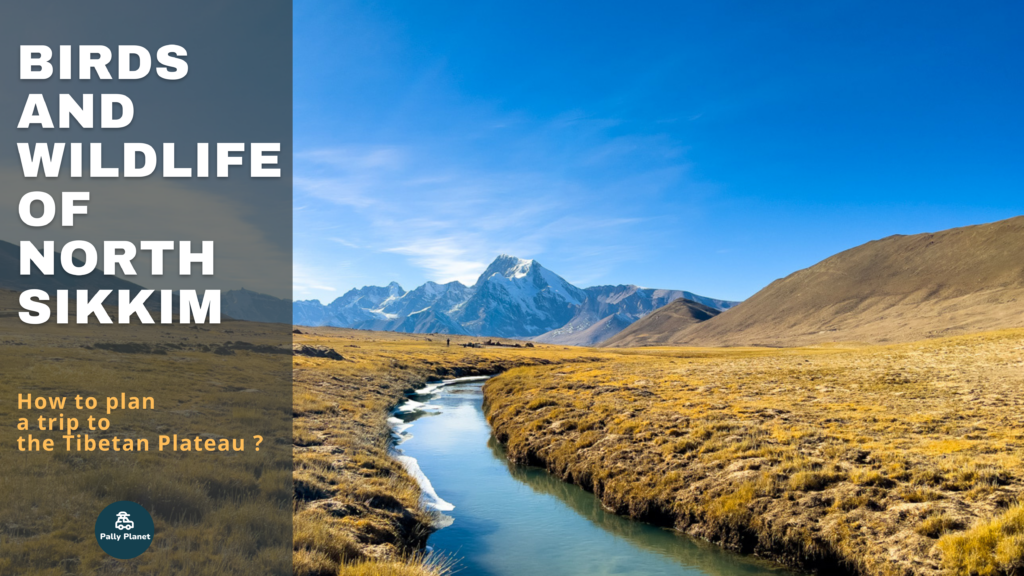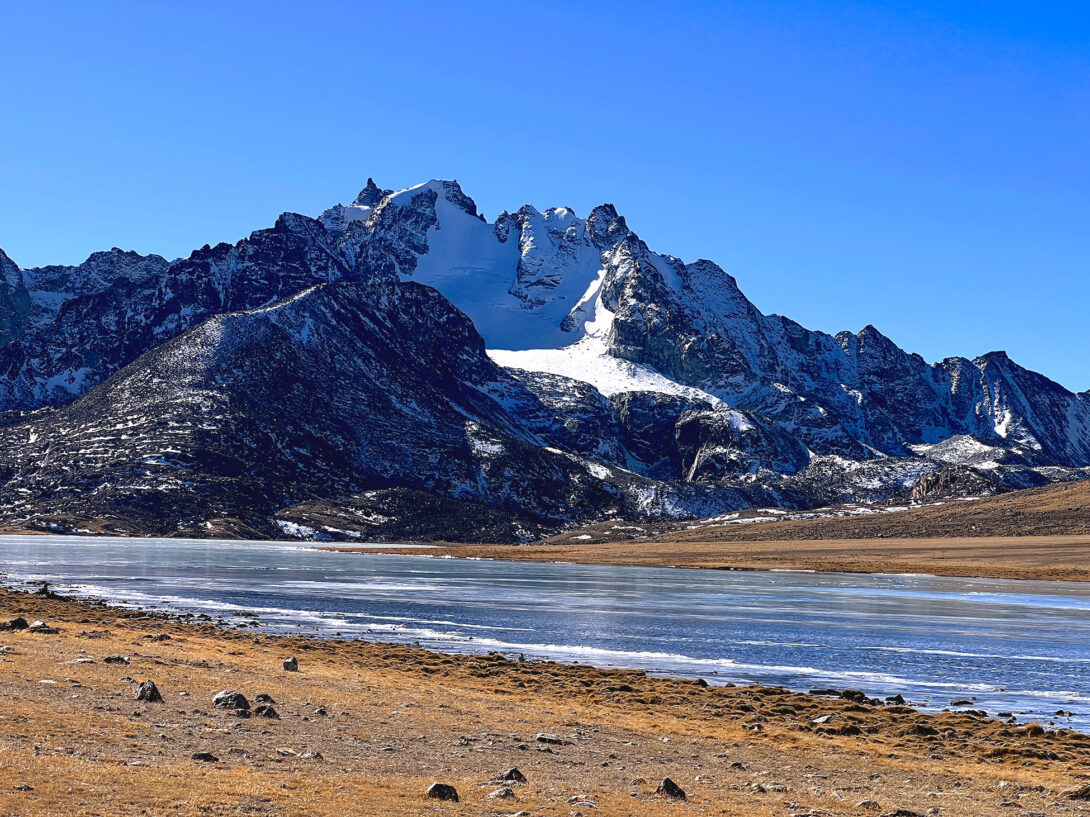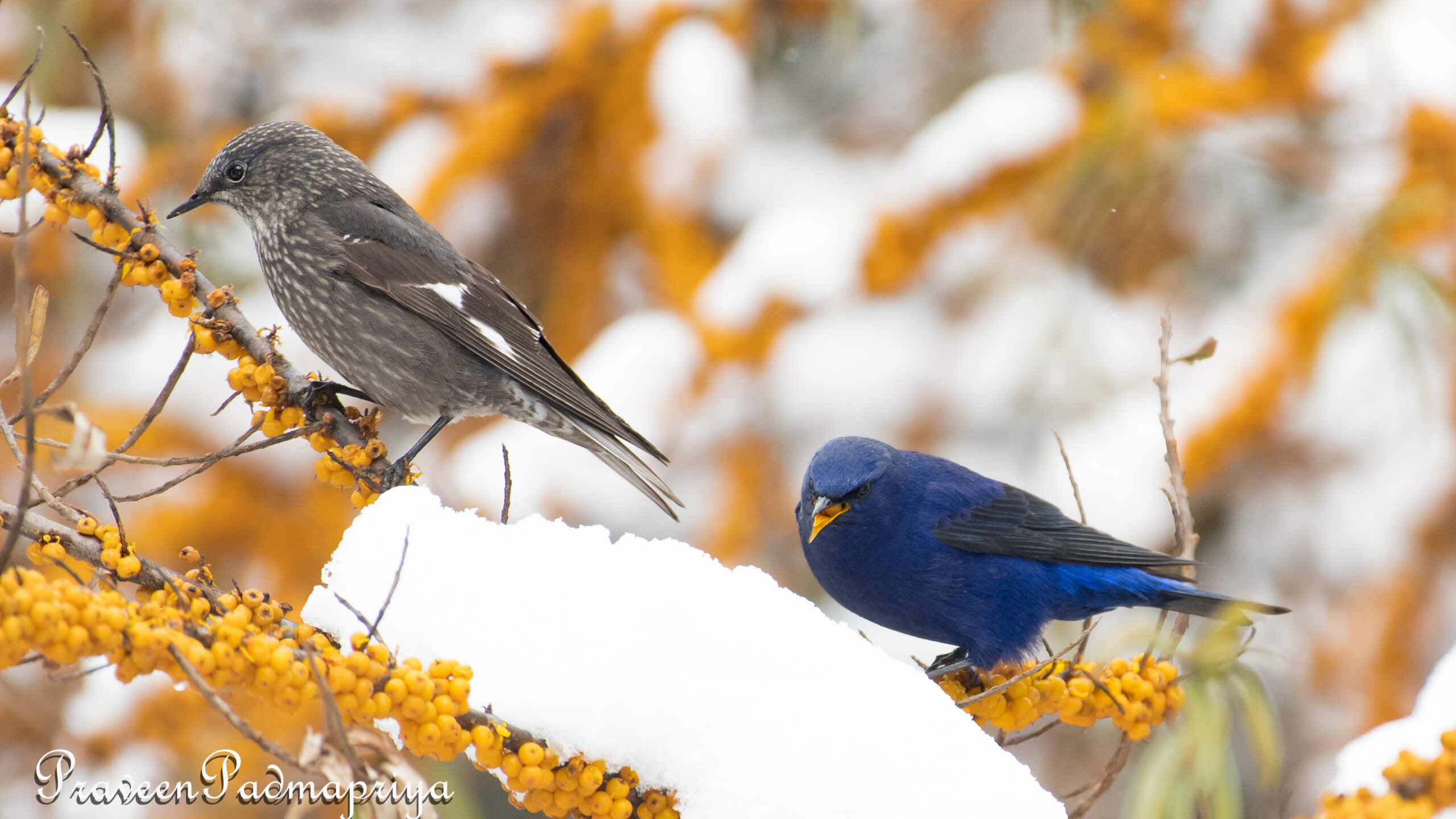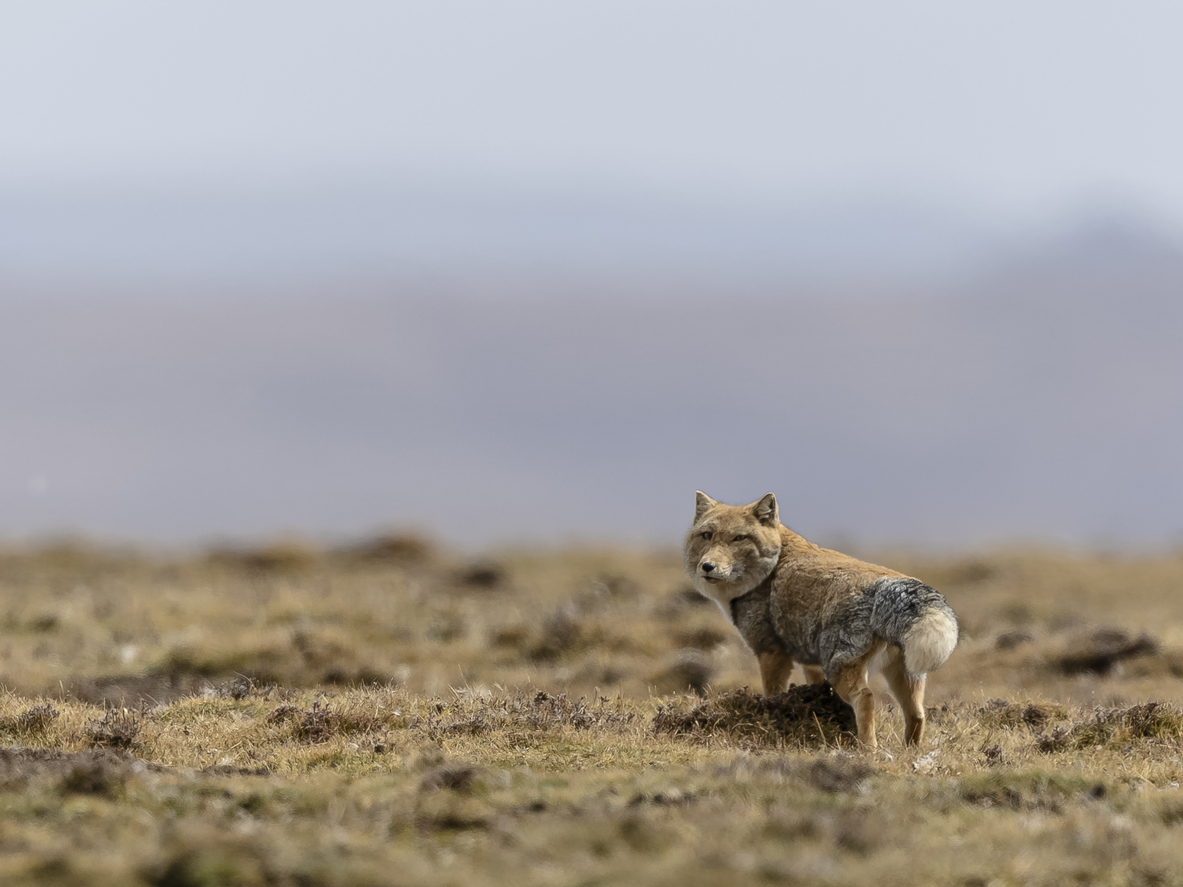
What is Tibetan Plateau?
The Tibetan plateau is a highly elevated large land area encompassing approximately 2 million square kilometres that include the autonomous region of Tibet in China, parts of Sikkim and Ladak, a portion of Pakistan, and a portion of Bhutan, among other places. The plateau was formed 55 million years ago when the present-day Indian and Tibetan regions collided.
The Himalayan mountain ranges and the Tibetan plateau are byproducts of that massive continent collision. The great collision occurred about 55 million years ago (We, the Homo sapiens and our direct ancestors, appeared only 0.3-2 million years ago).
The Tibetan plateau has an average elevation of 13000 feet. In many areas of the plateau, oxygen levels are low. The Tibetan autonomous region and its capital Lhasa, are the most populated areas on the plateau.
The plateau has its own weather patterns, culture, and ethnic groups. The region’s flora and fauna are as distinctive as its landscape. To understand a region’s uniqueness, challenging living conditions, and wildlife, one must need to make multiple visits to various parts of the plateau.
The Birds and Wildlife of the World’s Roof
Because of the plateau’s unique and harsh living conditions, the birds and other wildlife found here are also unique and worth exploring. Though wild yaks and snow leopards are popular among wildlife enthusiasts, many unique birds and animals seen here are lesser-known, even among serious nature lovers.
Unfortunately, many relevant destinations for nature explorers on the plateau are located either in areas with limited accessibility or in entry-restricted zones due to geopolitical reasons.
North Sikkim, India’s Roof

The Tibetan Plateau of North Sikkim, seen at 17500 feet above sea level is low in oxygen and a harsh environment for all living things. Though survival here is only meant for born tough creatures, many highland-plateau birds and animals have adapted themselves and made it home here.
How to get to North Sikkim’s Tibetan plateau?
Travelling by road from Gangtok or Siliguri is the most convenient and bearable option to reach Lachen, the base camp for your journey to North Sikkim highlands. Kolkatta and other major Indian cities have rail, road, and air connections with Siliguri. My journey began in Siliguri (Bagdogra Airport), and the road trip took nearly 10 hours.
Siliguri is a typical Bengali town with congested roads, dust, and noise. The traffic situation will ease, and beautiful mountainous landscapes will begin to appear as we leave the city limits. Nonetheless, the roads are narrow, dusty and uneven to a varying degree throughout your journey. Road widening efforts are currently underway at many places on the route.
Packaged water in plastic bottles is not permitted to use in Sikkim by law. Hence, use a thermal flask instead for carrying water.
It is important to stay hydrated all the time to avoid/reduce the severity of altitude sickness. Sipping warm water at regular intervals is essential for staying healthy during your north Sikkim expedition. So investing in a reliable one or a 1.5-litre thermal flask is a wise thing to do.
Acclimatisation break at Lachen
Lachen is a small village (9022 feet) that serves as an altitude adjustment point and base camp for trekkers and visitors heading to holy lakes in the higher mountains, such as Gurudongmar Lake (17800 ft). These lakes are revered by Hindus, Sikhs, and Buddhists alike. Because of its proximity to the Indo-China border, foreign passport holders must obtain special permission to visit the lake areas. Tso Lhamo (20300 ft), one of the world’s highest lakes, is an entry-restricted holy lake in the area. I am thankful to Mr Sethulal of Kerala police, who allowed me to join his team to visit the lake during my north Sikkim visit.
Lachen is a charming, picturesque Alpine village that is overrun with tourists in season. Most of them are pilgrims who come to visit holy lakes and trekkers who want to challenge these tough and high-altitude terrines. It is an excellent location for bird photography, especially in the winter. Many high-altitude birds descend to the Lachen area when the summit is covered in snow. The blue-sapphire-coloured Grandala is a winter speciality here. During the winter months, local and international birders flock here to see them.
What exactly is altitude sickness (also referred to as acute mountain sickness or AMS)? How do you keep altitude sickness at bay?

Some people can feel sick if they rapidly ascend above 8000 feet, especially if they do so in one go. It occurs due to decreased oxygen levels in the air for breathing and changes in atmospheric pressure. It is called Acute altitude sickness. Common symptoms are vomiting, shortness of breath, developing a headache, or feeling ill. It can escalate into a medical emergency if not properly addressed.
How to avoid Altitude Sickness or Acute Mountain Sickness (AMS) when visiting North Sikkim?
Acclimatise yourself.
Spending one or two days at an elevation of 70000 to 9000 feet to familiarise your body with the low oxygen and atmospheric pressure situation is an excellent way to avoid/reduce AMS.
Keep Hydrated
It will help you to beat AMS if you stay hydrated at all times during your stay in the area. While exploring a region above 10,000 feet, drinking small amounts of warm water at regular intervals is recommended.
Avoid consuming alcohol.
Alcohol can dehydrate you and impair your ability to sleep and rest properly. Hence It is better to avoid drinking alcohol until you become fully acclimatised.
Get a restful night’s sleep.
At this altitude, you must get at least six hours of sleep every night. It will assist you in retraining your cognitive abilities to it’s optimal level, which might have been impacted negatively due to low oxygen and atmospheric pressure.
Use altitude sickness medicine.
Before you begin such high-altitude adventures, please always consult with your doctor. After considering your health and other medications, your doctor may recommend anti-altitude sickness pills (anti-AMS tablets ).
Carry emergency oxygen.
Portable oxygen cylinders are available on the market. Please inquire with your guide about his emergency supplies and first aid readiness while finalising the arrangements.
What key birds and mammals will you likely see in North Sikkim?
Birds of North Sikkim
North Sikkim is a popular destination among birders, especially between September to December. You get to see the mystic Grandalas in Lachen in December. A birder must explore many precious birding spots between Lachen and Gurudongmar lake (67 Km). If you are a birdwatcher or bird photographer, you will likely get down from your vehicle frequently to scan icy streams, gorges and dry landscapes for birds on your trip to the Plateau.
The bird list of the region includes Hill Pegion, Speckled wood pigeon, Snow Pigeon, Common raven, White-throated dipper, White-rumped snow finch, Rufous-rumped snow finch, Black-winged snow finch, Brandt’s mountain snow finch, Great snow finch, Plain mountain finch, Robin accentor, Hume’s groundpecker, Solitary snipe, Ibisbill, Little owl, Horned lark, White-winged redstart, Alpine chough, Red-billed chough, Upland buzzard, Bearded vulture, Golden eagle, Goldcrest, Spotted nutcracker, Rusty flanked treecreeper, White-browed bush robin, Hodgson’s treecreeper, Green shrike babbler, Coal tit, Gray-crested tit, Blue-winged laughing thrush, Grey-sided laughing thrush, Long-billed thrush, Kalif pheasant, Yellow-rumped honeyguide, Eurasian wren and Scaly-breasted cupwing etc.

Mammals of North Sikkim
The plateau near Gurudongmar is ideal for viewing various regional Himalayan mammal species. The most common mammals seen here are Tibetan sand foxes and Tibetan goats. Another aminal to look for on this trip is the Southern Kiang (Wild Tibetan Ass). Himalayan ibex and argali (mountain sheep) are rare and seasonally seen species. The other two small mammals you can see here are the woolly hare and the ubiquitous back-lipped pika.

When is the best time to visit North Sikkim and Gurudongmar Lake for birds and wildlife?
November to December (The possibility of road closures due to snowfall should be expected after December 15th) and March to May
What precautions must senior travellers take before embarking on the North Sikkim Expedition?
You should consult your doctor and explain your travel plans in detail. I recommend getting a full body checkup a week before you leave. Check with your doctor if you can take anti-altitude sickness medication. Since proper medical facilities are almost nonexistent in North Sikkim, ensure you carry all your medicines in adequate quantities.
Carry warm clothing that can withstand temperatures ranging from -10 to -15 degrees Celsius. Purchase a balaclava that fits your head correctly. Make sure you have a thermal flask with you for warm drinking water.
How to select accommodation in Lachen?
Selecting the wrong accommodation for a stay has the potential to ruin your whole trip. No Accommodation beyond Lachen is recommendable. Even in Lachen, many hotels and homestays are very basic, and sometimes you might struggle to adjust to them.
Please ensure that your accommodation can provide hot water bags, thermal blankets, or room heaters at night. It is also critical to ensure that your accommodation has a 24-hour hot water supply

